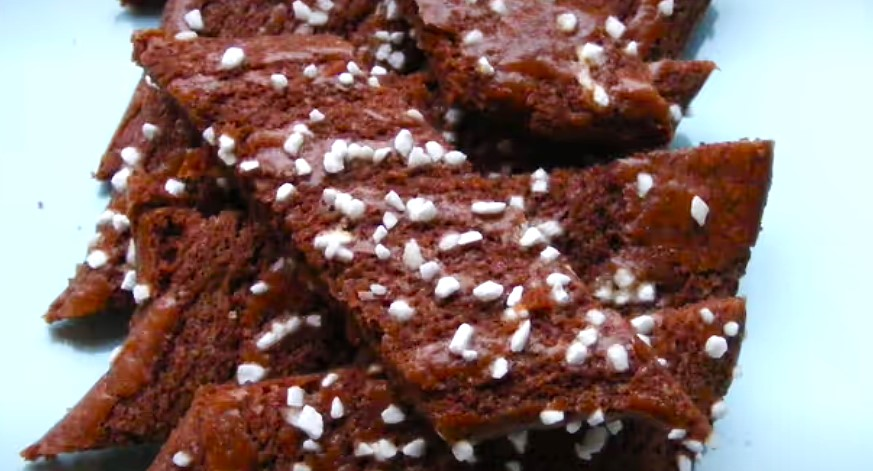Sweets are my secret source of happiness! At least for a while, especially when paired with the perfect cup of coffee. In Sweden, we have some delicious traditions that I would love to share with you. This could be the top-secret revealed! Enjoy 8 Swedish delights in this article.
Disclosure: This post may contain affiliate links, which means that we may earn a small commission on sales of the products without any extra cost to you.
The Swedish FIKA Tradition
From the day we are born, Swedes learn that the coffee break with treats is at 2 PM. If you visit Sweden, you will notice that the cafés are crowded at this time. It is almost a rule of thumb. Secondly, we learn that a real “fika” includes seven types of treats. Although this tradition has become less common since many women now work full-time, I grew up with my grandma serving home-baked goodies.
The tradition is said to have started at the beginning of the 20th century, with the purpose of showing gratitude and generosity to guests. However, it actually dates back further to the 19th century, when women began inviting each other over for coffee gatherings to socialize and take a break from household work. In this book by Anna Brones and Johanna Kindvall, you will learn a lot about the Fika tradition in Sweden.
Now, let’s talk about my favourite treats, which I problably share with many!
1. Kanelbulle: Cinnamon Bun

One of the most beloved Swedish treats is the classic cinnamon bun, called Kanelbulle. Expect to find this bun in any café you visit. Sometimes, you will notice variations, such as cardamom or vanilla filling instead. My favourite is the classic Kanelbulle with cinnamon. It is made of yeast-based sweet dough, filled with a mixture made of butter, sugar and cinnamon. When made properly, it has a sugar glaze and pearl sugar. When I bake cinnamon buns, I add the sugar glaze right after taking the buns out of the oven. It really helps to keep them moist, adds sweetness, and prevents them from drying out.
In this cookbook by Milo Kalén, you’ll find yummy recipes that bring out the best in your baking and keep your cinnamon buns juicy. She is a Swedish author and baker, known for her expertise in traditional Scandinavian baking, and runs the café Kaka på Kaka in Limhamn, outside Malmö.
The book “Scandi Bites: 60 Recipes for Sweet Treats, Party Food and Other Little Scandinavian Snacks” by Trine Hahnemann is a great introduction if you would like to learn more about Scandinavia, featuring delightful recipes for cinnamon buns, Danish sandwiches, and much more.
2. Princesstårta: Green Marzipan Cake

This is the cake of all cakes. Prinsesstårta, or Princess Cake, was originally created by the Swedish home economics teacher Jenny Åkerström in the early 20th century. She taught cooking to young girls, including Princess Margaretha, Princess Märtha, and Princess Astrid at Villa Fridhem, their summer residence near Norrköping, which is now a luxurious hotel. It is said that the cake was very popular, and Jenny Åkerström wrote a cookbook, The Princesses’ New Cookbook, in 1948. The cake has fluffy layers, raspberry jam, smooth vanilla cream, whipped cream, and a covering of green marzipan. It is also commonly served at special occasions such as birthdays.
3. Dammsugare: Chocolate Dipped Marzipan Bars

This pastry has a weird name, “Vacuum Cleaner”, but is actually a really delicious treat for your Swedish Fika. It is a small punch roll covered in green marzipan and dipped in chocolate at both ends, resembling a traditional vacuum cleaner from the 1920s, when it was first created. The inside is made of cake crumbs mixed with butter, sugar, and Swedish punsch liqueur.
4. Chokladboll: Chocolate Oatmeal Ball

The chocolate ball consists of a mixture of oats, butter, sugar, cocoa, and sometimes coffee. It is rolled into small balls, approximately the size of a golf ball, and covered with pearl sugar or coconut flakes. Chocolate balls require no baking, making them quick and easy to prepare. There are many variations. It is said that these balls were first popularized during World War II as a substitute for more luxurious chocolate treats.
5. Chokladsnittar: Chocolate Cuts

These are chocolate cookies, in English often referred to as “chocolate slices” or “chocolate cuts”, traditional Swedish cookies that are sliced into strips after baking. The dough is a mix of flour, sugar, cocoa, and eggs, and brushed with egg so that the sugar will stick. I think the best ones are a little soft in the middle.
6. Pepparkakor: Gingerbread Cookies

Gingerbread cookies, or Pepparkakor, are a traditional Swedish treat enjoyed especially during the Christmas season. The origins of these spicy, crispy cookies date back to the 15th century in Europe, where they were used for medicinal purposes due to their spices. By the 17th century, Pepparkakor had become popular in Sweden. They became strongly associated with Christmas because the spices used to make them were once expensive and exclusive. As a result, they were saved for the most important holiday of the year.
The cookies are known for their warm spices such as ginger, cinnamon, and cloves. We make them in many shapes as festive creations built from gingerbread cookies, decorated with icing, candy, and other sweets. The image shows my daughter´s creativity! There are gingerbread house competitions every Christmas, for example at ArkDes Museum in Stockholm.
Here is a wonderful book by Mima Sinclair, introducing the world of gingerbread cookies, complete with recipes and templates for houses.
7. Lussekatt: Saffron Bun

Once a year, the Cinnamon Bun faces competition from the Saffron Bun! The Lussekatt is a Swedish wheat pastry strongly associated with Advent, Lucia, and Christmas, especially during the celebration of Saint Lucia’s Day on December 13th. The Lussekatt is a wheat bun typically yellow-colored by saffron. This bun likely originates from Holland and northern Germany in the 17th century, where a saffron bread called “Duivekater” was baked. It is said that it was made to ward off the light-shy devil.
If you would like to know more about Swedish Christmas traditions and recepies, I can really recommend this book by Ernst Kirchsteiger. He is very famous in Sweden and a true Christmas enthusiast. He brings a lot of inspiration with his homemade food and handmade Christmas crafts. Every year, he hosts a very popular show on Swedish television.
8. Semla: Swedish Cream Bun

Last but not least, perhaps the most interesting treat is the cream bun called Semla! It boasts a rich history, and has its roots in medieval Sweden. It was originally a plain bread bun eaten soaked in warm milk, known as “hetvägg”. It is associated with a traditional day, “Fettisdagen,” or Shrove Tuesday.
During Lent, when Christians fasted, the semla provided the final indulgence before the period of abstinence. We even had a king that died on Shrove Tuesday, King Adolf Frederick, February 12, 1771. The king ate himself to death, according to Count Johan Gabriel Oxenstierna. Today, the simple bun has evolved into a sweet pastry filled with almond paste topped with whipped cream. Each year, we consume over six million of them (in 2024) on just one Tuesday!



